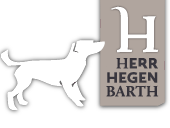
Caspar David Friedrich — Found in Translation
19. October 2024 — 09. April 2025
Location:
Hegenbarth Sammlung Berlin
Laubacher Straße 38
14197 Berlin
Event Program
Opening
Saturday, 19 October 2024, 3—9 pm
Artist Talk with Thomas Baumhekel
Saturday, 19 October 2024, 7 pm
Wednesday, 19 March 2025, 7 pm
Book Launch by editors
Caspar David Friedrich — Complete Letters and Writings
Monday, 11 November 2024, 7 pm
Experiments in BILDLABOR
Friday, 17 January 2025, 7—9 pm
Wednesday, 26 February 2025, 7—9 pm
Wednesday, 26 March 2025, 7—9 pm
On the occasion of the 250th birthday of Caspar David Friedrich (1774–1840), the Hegenbarth Collection Berlin is showcasing works on paper by the Romantic artist from its own holdings, paired with both historical and modern interpretations. The exhibition focuses on the temporal and cultural translation of the motif of landscape. The selected works span from the 15th century until today. Art historian and exhibition curator Johannes Rößler will present the newly edited letters and writings of Caspar David Friedrich as co-editor during the exhibition at the Hegenbarth Collection Berlin.
The exhibition title ‚Caspar David Friedrich — Found in Translation‘ playfully references Sofia Coppola’s 2003 film ‚Lost in Translation‘. The juxtaposition explores transformation and translation in the depiction of landscapes within the evolution of European art and in dialogue with selected Japanese art positions from the 15th and 21st centuries.
The 250th birthday of Germany's most renowned Romantic artist, Caspar David Friedrich (1774–1840), is being celebrated with numerous retrospectives and exhibitions in both national and international contexts. For the first time, the Hegenbarth Collection Berlin presents three outstanding works on paper by Friedrich, from its own holdings, each representing different phases of his artistic development.
The small etching ‚Path Between Deciduous Trees With Figures‘, created around 1800, marks Friedrich’s early work immediately after completing his artistic training in Copenhagen and relocating to Dresden. It depicts a densely arranged forest scene with stylized leaves, an atmospheric sky, and figures of a rider and a wanderer. The etched composition is rich in anecdotal detail, fully reflecting the prevailing approach to landscape art of its time.
The pencil drawing ‚Roots of an Alder‘ created in 1808, dates from a few years later and captures a meticulously observed section of a natural landscape. Likely drawn by a stream, the roots of what is probably a beech tree lie exposed, with the trunk showing signs of significant weathering. Unlike Friedrich’s usual practice, the exact location of this root area remains ambiguous, as the work lacks specific annotations. Using lines, strokes, and varying intensities of hatching, Friedrich documented the tree's intricate physiognomy on what was likely an album page.
The third piece ‚Meadow Near Teplitz‘, dated September 3, 1835, belongs to Friedrich's later work. It is widely believed to be one of the first pieces he created following his stroke. Despite his health challenges, the strokes and hatching are confidently rendered on the small sheet of paper, depicting a sloping landscape with a meadow and rocks in the foreground and a hazy landscape plain in the background.
Baumhekel’s most recent collage, ‚Golden Harp Hotel‘ (2024), depicts the historic wellness hotel in Teplitz (Teplice, Czech Republic), where Caspar David Friedrich recuperated from a stroke during the summer of 1835. Baumhekel sketched the hotel’s elaborate façade and adorned its windows with postage stamps featuring Friedrich’s likeness and other notable visitors to Teplitz, such as Ludwig van Beethoven.
Another referenced Friedrich motif is a nocturnal moonlit landscape titled ‚When Midnight Falls‘ (2011). Here, Baumhekel placed a circular moon symbol at the center of the upper edge of the sheet, evoking the idea of a moonlit nightscape. This work alludes to Friedrich’s iconic paintings ‚Two Men Contemplating the Moon‘ (1819/20, Albertinum SKD Dresden, and 1830–35, private collection) and ‚Man and Woman Contemplating the Moon‘ (c. 1824, Alte Nationalgalerie SMB Berlin). A contemporary interpretation of this theme is represented by Japanese photographic artist Hiroyuki Masuyama (b. 1968) with his ‚After Caspar David Friedrich: Two Men Contemplating the Moon 1819/20‘ (2019). Masuyama revisits the locations of Friedrich’s paintings, digitally reconstructing them from hundreds of individual photographs, which he then presents in LED lightboxes. This artistic time travel is striking, as Masuyama not only translates Friedrich’s motifs into the present but also mirrors Friedrich’s technique of assembling his paintings from multiple sketches, albeit with modern tools.
The theme of moon contemplation, however, is neither an invention by Caspar David Friedrich nor exclusive to European art history. This is evident in the Japanese hanging scroll ‚Chinese Scholars Viewing the Moon‘ (c. 1500) by Jasoku (presumably 15th century). The scroll depicts two men seated on a rocky plateau, joined by a standing servant, gazing at the moon rising above a distant mountain range. This subject, portraying Chinese gentlemen admiring the moon, was a popular motif highly appreciated in Japan.
These global artistic perspectives are juxtaposed with European landscape depictions, which are periodically rotated.
The exhibition features three contemporaries of Friedrich: Adrian Zingg (1734–1816), August Kopisch (1799–1853), and Heinrich Stuhlmann (1803–1883). Stuhlmann, who spent time in Dresden around 1830, represents the "northern" approach to landscape with two small-format depictions of the Ore Mountains (c. 1830). In contrast, Kopisch’s ‚View of Cefalù‘ (1827) embodies the "southern" perspective.
Although landscapes were not a primary focus for Josef Hegenbarth (1884–1962), he created numerous works in various techniques (glue paints and pen-and-ink drawings) and contexts, ranging from illustrative landscapes to depictions of local excursion sites. While Hegenbarth rejected non-representational art, his landscapes sit between abstraction and imagination, as seen in the two large-format works ‚Castle Hill near Bohemian Kamnitz‘ (1935 and 1943).
Max Ernst (1891–1976) contributed a vibrantly surreal decalcomania titled ‚Antipodes of the Landscape‘ (1954). A few years later, Karl Otto Götz (1914–2017) produced an informal work that evokes an indomitable landscape. The gestural nature of this piece forms a conceptual bridge to Thomas Baumhekel’s dynamically painted calligraphies.
Opening hours
Wednesdays 12—5 pm and by appointment.
Closed on bank holidays.




